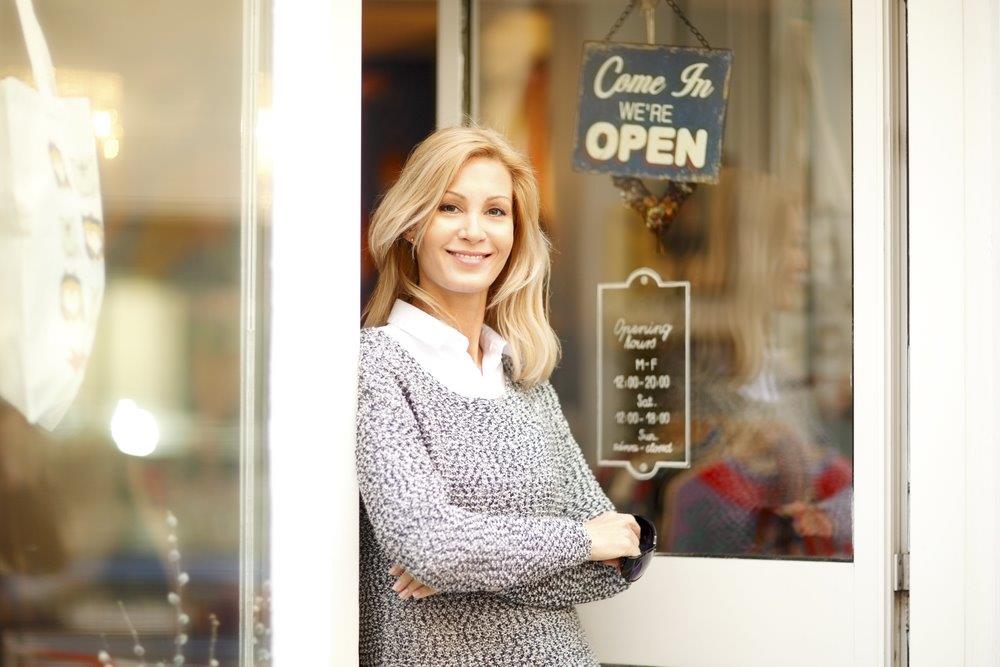 You can say what you want about how great your product is, but your customer wants to know what others think about it. Third parties give the appearance of independent opinion that adds significant credibility to their endorsements.
You can say what you want about how great your product is, but your customer wants to know what others think about it. Third parties give the appearance of independent opinion that adds significant credibility to their endorsements.
Testimonial examples that successful CPG brand builders use include celebrity and customer testimonials, awards and certifications, social media, publications, messaging, word of mouth, and other accolades. Testimonial advertising can be delivered in a variety of ways, but the most effective method for consumer products is at the point of sale. It’s the only place where your customer, their decision, their money, and your product all come together. No matter what they have heard before that moment, their mind is still open for a better deal.
The next time you are in a supermarket, notice the “swap outs,” the industry term for last minute decisions where the customer was intent on buying one brand but got another instead. The evidence is the brand that is misplaced and put with the brand they wound up finally buying. They actually grabbed the first brand they intended to buy, pulled it out of their cart and placed it on the shelf with the products from the brand they did buy, leaving the “swap out.” So what changed their mind? Probably a testimonial!
Commercially delivered testimonial advertising is effective, but when you come right down to your customer’s final decision, it’s what’s on your package that counts. In-store signage is also very powerful when combined with a floor display.
Next to point of sale advertising, word of mouth is the most effective. It’s coming from someone your customers know and trust. It’s the least “salesy” and it’s the most credible.
Ways to Get the Word Out
Squeeze Play!
The biggest challenge you face as a CPG brand builder is finding the space to display your testimonial. It’s very limited on the retail shelf. Your label is usually 3” X 4”. It’s difficult to fit a testimonial on your label with all the other requirements you must satisfy.
For instance, you must say what you are selling, the size and the amount. You must list all the legal requirements. You certainly want your brand name on there. And you want your logo with enough “nose room” (white space) around it to make it readable from 4 feet away. Ouch! That’s really crowded! But now, you want to add a customer testimonial. It better be 3 or 4 words maximum. Because once you put it on your label with the name of the person giving that testimonial, you are out of space. Also, it must be readable, so increase the font size. This is indeed a challenge from a graphic design standpoint.
Shelf Talkers
Some consumer brands give up on the idea of getting the testimonial on the label for these reasons. Instead, they use signage associated with the shelf space their product is offered on. But these shelf signs are tiny as well, usually 3”x 3” also known as “shelf talkers.” Shelf talkers are effective if they are up, current, and well designed to be easily read.
But that’s the problem. They usually aren’t up. The store or the competition take them down on a regular basis. Or they are simply victims of wear and tear. You must have a representative who is constantly checking the shelf to make sure they are still up and “talking!”
Floor Display
If you are fortunate enough to get a floor display, you will be in the best position to use testimonial advertising. Here, depending on the size of the display, you can impact the customer in the most effective way. Testimonial advertising here can be big, easily seen, and directly associated with your product.
Stick To It!
When we built the Barefoot Wine brand, we were faced with these same challenges. Here’s one way we solved the problem after years of experimentation:
We received more awards than any of our competitors. Awards are testimonials from respected third-party organizations. We wanted to get the message of those awards to the point of sale.
The awards wouldn’t fit on the labels because there simply was no room. We tried the shelf talkers, but we couldn’t maintain their position. So we thought, “It has to happen in production.” The product always gets to the shelf, so anything we put on the product would get there as well.
So we created signs that we hung from our bottlenecks and applied them on the bottling line. We thought that would solve the problem. It didn’t! They got ripped, crushed, and knocked off in the shipping process.
Finally, we realized the only way to get these testimonials to the store every time and in a readable condition was to actually apply the award stickers directly to the bottles on the bottling line. Sounds easy? It wasn’t. It took us two years to solve the mechanical challenges of positioning the bottles exactly right every time for the properly-placed application of the award stickers. But we finally did it! And it took the rest of our industry years to catch up.
So, accolades are effective if they are visible, readable, and attached to your product. Label and package designers would do well to consider where the testimonials are going to go before completing their designs.
Short and Sweet!
The trick is how to write a testimony that will make the most impact in the small space provided given your customers’ short attention span. Your testimony must be short and to the point. Here are 3 examples:
Quality Endorsements
Winning official competitions in your industry with awards like Gold Medal, First Place, Best of Show, Best of Class, and Best Buy are easy to present as some sort of medallion. They should indicate the contest, date, city and organization. It’s an easy quality queue that can “speak” from your package. It’s compact and can be in gold with scalloped edges to look “official.”
Results
Testimonials from happy customers should tout the results they enjoyed using your products, but again, only a few words. “Best I’ve ever used,” “My guests were impressed, “At last, I found my brand,” “All I ever use,” and “I love it!” are a few examples. Be sure to identify the advocate by name and who they are, average customers’ or movie stars. Some customers are motivated by celebrities, but there is a growing movement these days toward average Joes. Their opinions are less likely to be bought.
Feelings
Your advocate might share the feeling your product gave them. Did it make them feel happy, proud, satisfied, confident, or relieved? Sharing the feeling rather than the features and benefits can compel your customer to want to have those same feelings.
These type of testimonials work best when they are set at a slight angle to distinguish them from the other package information and to draw attention. One short line with Italic font, different color, and exclamation point can grab your customer’s attention and deliver the message quickly and effectively.
 Extra! Extra!
Extra! Extra!
There’s nothing like a third-party endorsement from an independent publication giving your product a positive review or citing your recent win in an industry contest. It clearly appears to be independent and unsolicited, giving it great credibility. But it’s fleeting. Tomorrow there’s a new publication and a new winner or top recommendation. That’s why its imperative that you grab those publications while they are hot and send them to all your buyers. Some might call this a form of testimonial propaganda. But it works because it creates familiarity and credibility using existing press.
Make a Campaign Out of Every Mention of Your Product
The fact is, very few people will actually be motivated by publications to buy your products because very few will see the publication. Even less will remember what they read. But if you make a campaign out of every mention of your product, your chain and box store buyers will say, “I read about your product everywhere!” Well, they don’t really. But because you have put all those publications in their face on a regular basis, they see the different banner lines of many different publications all mentioning your product. This is the best way to impress gatekeepers with testimonials.
Another use of publications mentioning your products is to reduce them quickly to point of sale shelf tags and install them in the territory in which you received the accolade. For instance, when we won a contest in LA, we would have the quote from the reprint in the LA Times up on the shelves of LA supermarkets the next day! If we got a mention in the Dallas Morning News, you guessed it, we plastered that all over Dallas!
Look for the pundits and critics in your industry. Provide them with samples to test, compare and write about. Provide them with all the background information they need to write a compelling and fact-filled article. You will be surprised how much of your copy they use. Industry critics can provide you with testimonials you can use in many ways. So make it easy for them!
Pass the Test!
What’s good and what’s bad seem to keep changing from year to year. You may have some ingredients in your product that government testing standards deem healthy or desirable. Stay on top of these as they keep changing as more information and better data become available.
Many products like to tout some ingredient that a new government report recommends, or, more likely, brag about the absence of some ingredient that has been found to be detrimental. Either way, they are using the government as a third-party testimonial because they subscribe to the recommended guidelines.
But that’s a double-edged sword since you can have a lot of product out there touting something that suddenly is no longer perceived in a positive manner.
Testimonials can also come from independent testing labs. Many consumer brand builders pay these labs to test, approve or endorse their products, and then list the lab and the results on their products. This is a great way to establish credibility but it can get expensive.
Pass It On!
As mentioned, probably the best form of testimonial advertising is word-of-mouth. This is why your customer service is so important. Your customers who tell you about a problem with your products are already outspoken. Many have already gone to bat for your products with their family and friends. They are the ones who have gone on record supporting your products. That’s why they want resolution. If they get it to their satisfaction, they are more likely to step up the testimonial campaign. But if they don’t, they will feel obligated to bad mouth your products. They want to be the first to take back their recommendation to protect their own reputation.
Customer Service for Customer Intel and Advocate Creation
Many companies see customer service as “complaint resolution.” They have missed the point. It’s better described as “customer intel” and “advocate creation.” By spending just a few minutes with the “complaining” customer, you can determine if they have recommended your products in the past. You can determine where they bought it, how much they paid, if it was in stock, and what their past experience was with your product. Thank them for their suggestions and make sure that your Production and Marketing departments get the message. Then, follow up with the “complainer” about your progress toward the solution.
By exceeding their expectations, you can use the customer “complaint” to build an advocate who will send the message you really want out there, “I had a problem but they more than made up for it!”
When it comes to word of mouth, what happened when things went south is more important to a prospect than what went right. That’s when your company shows its true colors.
Thanks to today’s technology, just a customer’s Instagram selfie with your product is a great, unsolicited, and independent testimonial. The implications of Facebook messaging to the CPG space is just begging to be felt, but long-term, your customers are going out on a limb when recommending your product to their friends – a very personalized and credible testimonial!
Conclusion
Third-party testimonials come in various types and from various sources. It’s nice to get a testimonial, but it’s more important how you use it as part of your marketing and merchandising plan. The testimonial has little effect if it is not readable and, on the shelf, right next to your product. Figuring out the best way to use testimonials in the retail environment is a big challenge due to space limitations. But those who figure it out will make the sales. It’s all about getting the word out!



